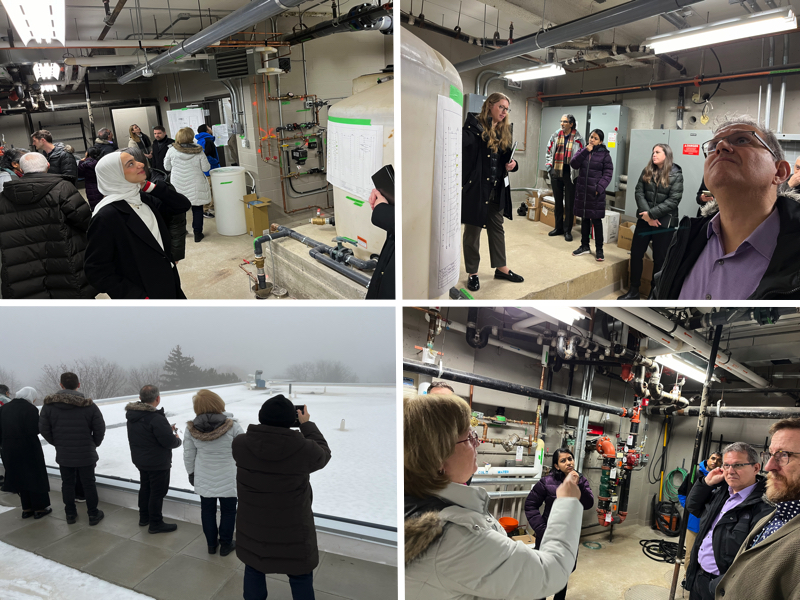Assessing the Performance and Scalability of a Smart Blue Roof

Urban Water researchers and graduate students from public health, architecture, and civil engineering are partnering with Credit Valley Conservation to monitor their newly installed Smart Blue Roof on CVC Headquarters in Mississauga!
The Urban Water TMU team includes PhD students Afsana Akhie (Civil Engineering), Dorothy Jones (Architecture), and Dima Balaa (Public Health), led by researchers Darko Joksimovic (Civil Engineering), Hitesh Doshi (Architecture), Kim Gilbride (Chemistry/Biology), Fatih Sekercioglu, Ian Young (Public Health), and project managed by Angela Murphy (Urban Water TMU).
The goal of the research project is to assess the real-world performance of the SMART blue roof system on CVC headquarters with respect to: facilitating stormwater retention, assessing public health issues associated with standing water, and monitoring the impact of standing water on the building structure.*
The study is being funded by a grant from the Federation of Canadian Municipalities and a cluster of Mitacs Fellowships.
*More on the Key Objectives of the Study:
The first key objective of the study is to investigate the public health hazards related to standing water on the roof and consider strategies to mitigate such risks.
Water quality parameters will be monitored at integrals beginning with 24 h to assess the rationale of the 24 h time limit for standing water described in the Ontario Building Code. Additional water quality parameters have been selected as they are requirements in the CSA/Ontario Building Code for stormwater management, 2003 Ontario Ministry of the Environment, Conservation and Parks Stormwater Management Planning and Design Manual, and best practices for urban agriculture.
A second key objective of the study is to investigate supplemental monitoring approaches such as low-cost wireless sensors for monitoring of blue roofs, analyze the performance data and support the CVC team in the development of best practices for stormwater management of blue roofs, and assess the benefits and scalability for widespread adoption of the concept.
A third key objective of the study is to determine the impact of standing water on the rooftop for extended periods on the integrity and durability of the structural and building components. Moreover, the energy and GHG reductions and economic benefits will be assessed and scaled.
For more information on the Feasibility Study conducted from 2017-2019 see: https://www.torontomu.ca/water/natural-systems---green-tech/research/blue_roofs/
